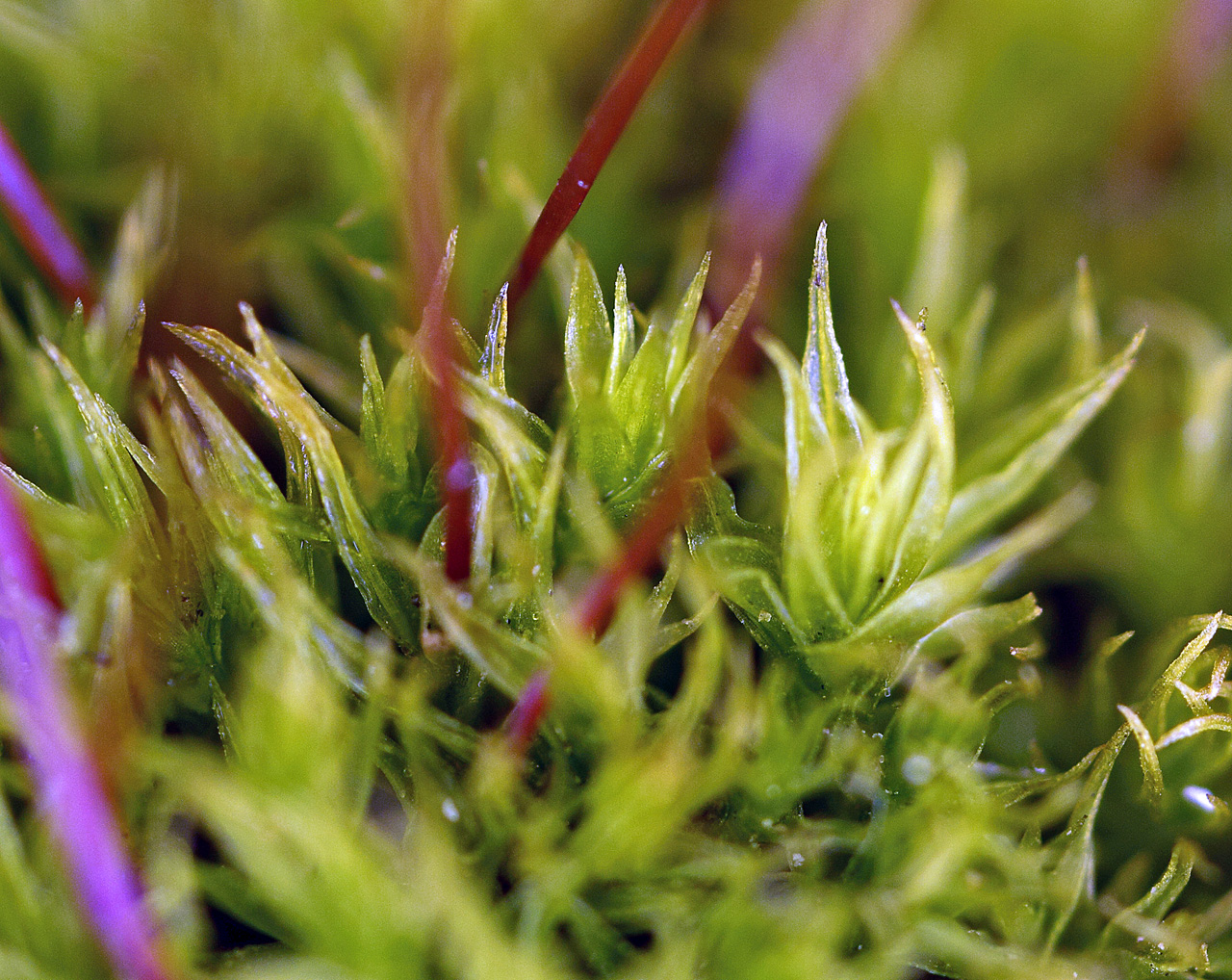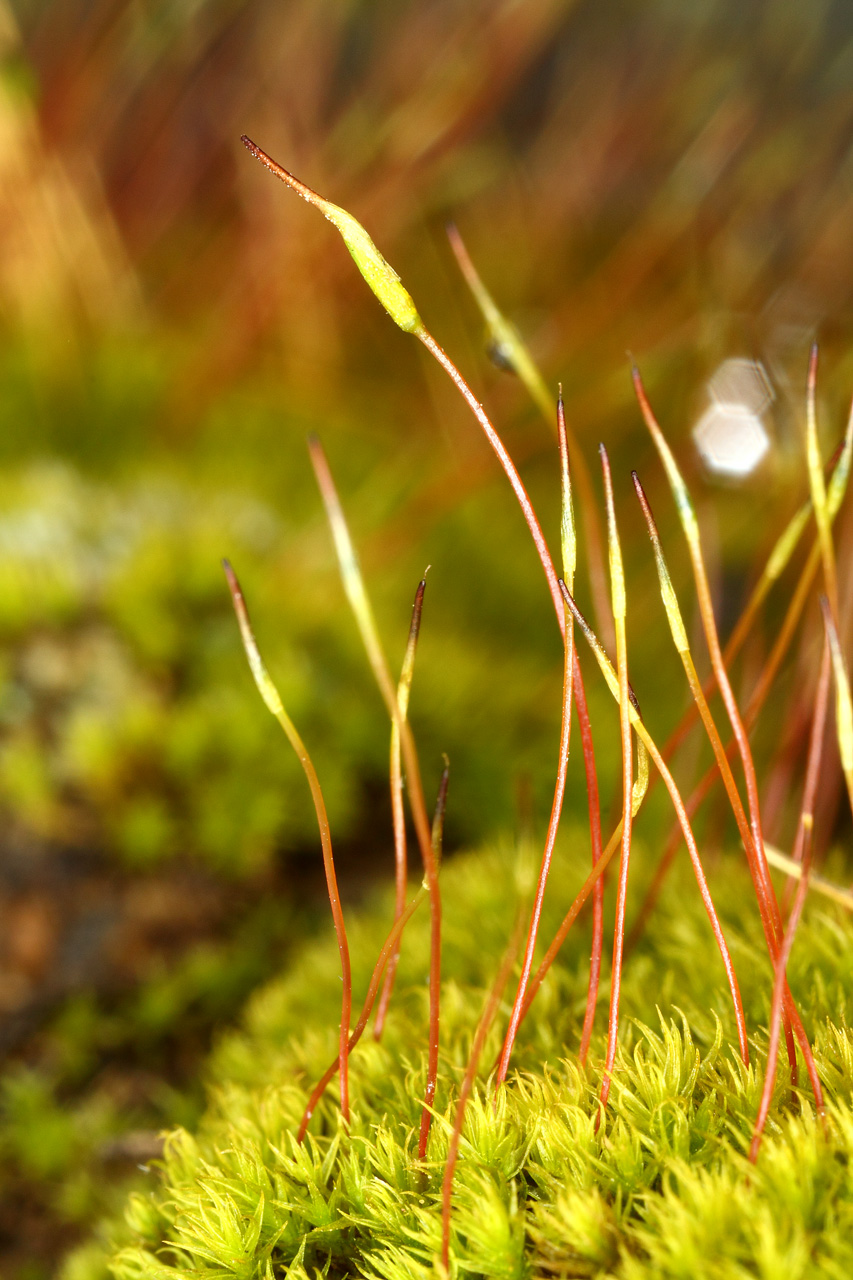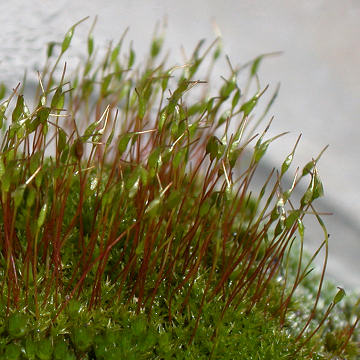Ceratodon purpureus
Purpurstieliges horn -moss ( Ceratodon purpureus )
The Purpurstielige horn -moss ( Ceratodon purpureus ) and purple moss, Purpurstielzchen is a species in the genus horn tooth Moose ( Ceratodon ). The name of the genus is derived from the Greek keratos / keras = Horn and odon = tooth and refers to the dry hakig incurved peristome. The species name refers to the color of the Seta.
Varieties
In addition to the type exist as a variety:
- Ceratodon purpureus var rotundifolius: with roundish leaves.
- Ceratodon purpureus var obtusifolius: with blunt leaves.
Description
The Purpurstielige horn -moss reaches a height of up to 7.5 mm, it grows about 2.8 mm per year, in very shady places the moss can also rarely up to 4.5 cm tall. The stem is erect, often branched. The leaves are broad and lanceolate, they curl up when dry. The smooth to slightly papillose lamina cells are fairly uniform, rounded - square, rectangular at the base of the leaf. The Seta is initially yellowish to reddish. At the age they become discolored by purple, to red-brown in old age. The spore capsule on the extended Seta is kropfig and dry heavily grooved, the two shared 16 peristome deep, the lid conical, the cap-shaped calyptra.
Dissemination
The species is distributed worldwide in the tropics, but less than that in the temperate zones. In Europe it is very common and rich in form. Mostly it is found in waste places. It grows on soil, wood, rock or sand and is also found in inner cities. The species is tolerant of soil toxins and pollution than other moss species and is found also results from contaminated soils, for example, on highways.
Propagation
The Purpurstielige horn -moss, like all mosses over a generational change. The haploid spores are blown and dispersed by the wind from the spore capsule. The spores germinate in two phases, until they swell and expand, through this motion, the capsule is torn and the moss can germinate. From the initially resulting Protonema the moss plant develops. After fertilization, the diploid sporophyte, which by meiosis haploid spores again, there are developed. The spores are still viable even after 16 years of dry storage.
Insects
The moss is eaten mainly of thorn horrors of the genus Tetrix.
Gallery
Dried Purpurstieliges horn -moss with sporophytes
Seta (capsule stalk)
Capsule stalks, stems and leaves
Large leaves ( Photo: Kristian Peters)
Leaf edge at 400x magnification
Lamina cells at 400x magnification









